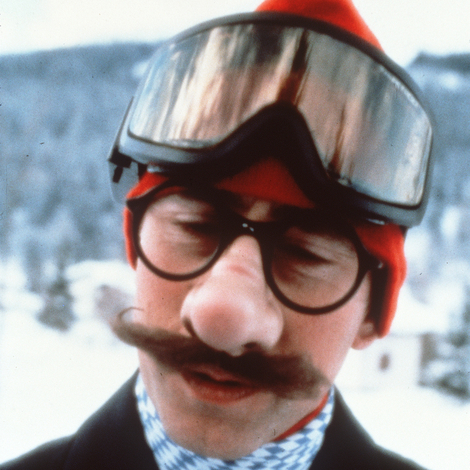Picture a composer writing a sonata or a symphony, and what do you see? Someone at a desk or a keyboard, scribbling in a frenzy or absently chewing a pen? Anna Clyne, a 44-year-old London native transplanted to New Paltz, in New York’s Hudson Valley, does it her way. Inspiration comes at her over multiple channels, and dictation from the Muse seems not to be one of them. Instead, she re-invents her process project by project. It’s not some technical ism that watermarks her catalogue but her resourcefulness as a musical Scheherazade. The stories her music tells—now spine-tingling, now gravely contemplative—have won her commissions from top orchestras, Grammy nominations, and more than 11 million plays on Spotify, not to mention exposure at the World Economic Forum in Davos.
Sometimes a piece takes shape around pre-existing art: Samuel Taylor Coleridge’s “The Rime of the Ancient Mariner,” filtered through the sensibility of Franz Schubert; Gerhard Richter’s 5,000-page Atlas scrapbook; or a gargoyle carved into the scroll of a Baroque violin she found in an Oxford thrift shop. Other times, her creativity plays out in a parallel medium before finding its musical form. Clyne has been known to “test” a new piece in the strict privacy of her studio by getting on her feet and dancing.

For one key to Clyne’s major new Concerto for Augmented Orchestra, which premieres on February 14 in St. Louis, consider this acrostic. Take the first letter of each of its seven color-coded, five-minute movements—Plum, Amber, Lava, Ebony, Teal, Tangerine, and Emerald—and, voilà!, you’ve got PALETTE, the umbrella title of the full concerto. Not Rainbow, mind you, suggesting nature’s prismatic spectrum of red, orange, yellow, green, blue, indigo, violet (“Richard Of York Gave Battle In Vain”), but PALETTE, a curated personal assortment of designer swatches.
Which is germane. “As part of the creative process,” Clyne writes on her Web site, “I have created a painting for each movement, “exploring gesture, texture, light and dark, color and form—elements that also translate to music.” The canvases are abstract, polychromatic, stylistically of a piece, yet far from alike in impact. (A limited edition of prints is available for purchase.) For synesthetic eye appeal within the concert hall, there’s bespoke lighting design by Luke Kritzeck, a Merlin of his craft whose credits include, just for starters, six seasons with Cirque du Soleil.

The aural spectrum has its enhancements, too. Electronics have been an arrow in Clyne’s quiver since her student days. The “Augmented Orchestra” used in PALETTE—“A.O.” for short—is software she has been developing in tandem with her husband, Jody Elff, whose wizardry in sound design rivals Kritzeck’s in the realms of light. And A.O. is what, exactly?
“Clarifying what A.O. isn’t helps to understand what it is,” Clyne said recently on Zoom. “It’s not amplifying the instruments. It’s not looping the instruments. There aren’t any pre-recorded samples. Everything is happening in real time. In PALETTE, there are microphones on eight very specific instruments. The orchestral musicians just play exactly what’s on the page as if they were playing The Rite of Spring or Beethoven’s Fifth. Behind the scenes, at very specific moments, Jody triggers the custom software to modify, in very subtle ways, the sound you’re hearing acoustically. And at very specific moments, the effect will stop.”
The sonics are baked into the score as the visuals are not, which is doubtless as it should be. Going back at least to George Frideric Handel’s Music for the Royal Fireworks, marriages of sound and spectacle have proven vastly popular. But when music devolves to second fiddle, does it truly register at all?
“Visuals—be they lighting, film, or projections—can enhance the experience of music in a concert setting, but they can also overpower it,” Clyne says. “I have experienced both. With PALETTE, we’ve worked carefully to make the lighting design a very organic extension of the music, to transform the space in a way that doesn’t distract from the music but complements it. That’s the hope, anyway!”
Anna Clyne’s PALETTE will be on at the Touhill Performing Arts Center, at the University of Missouri–St. Louis, on February 14 and 15
Matthew Gurewitsch writes about opera and classical music for AIR MAIL. He lives in Hawaii


